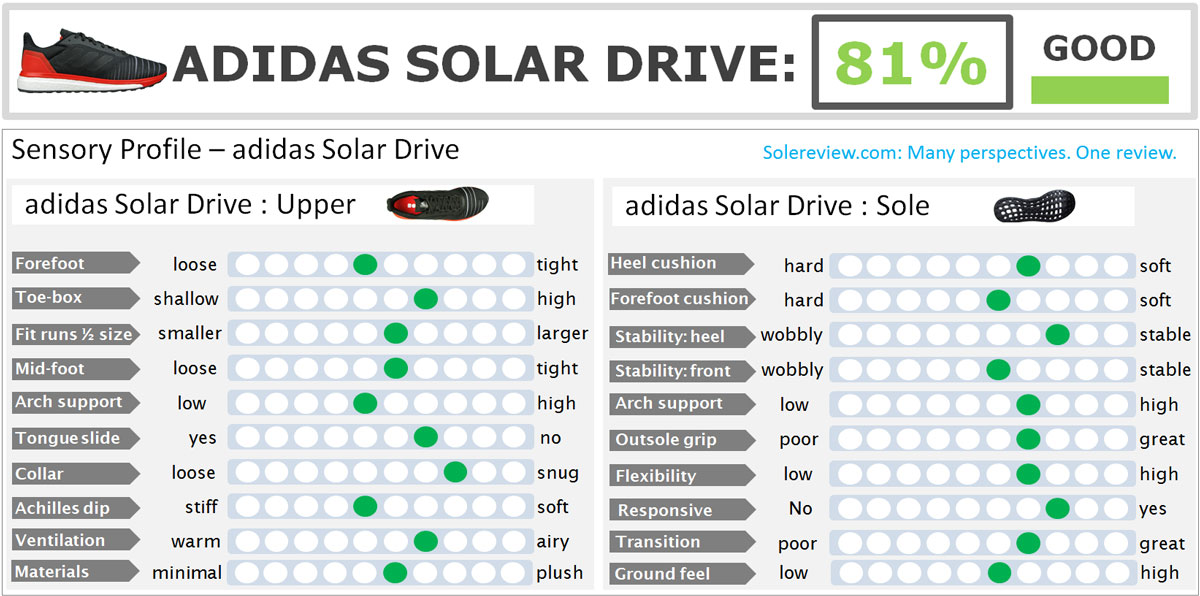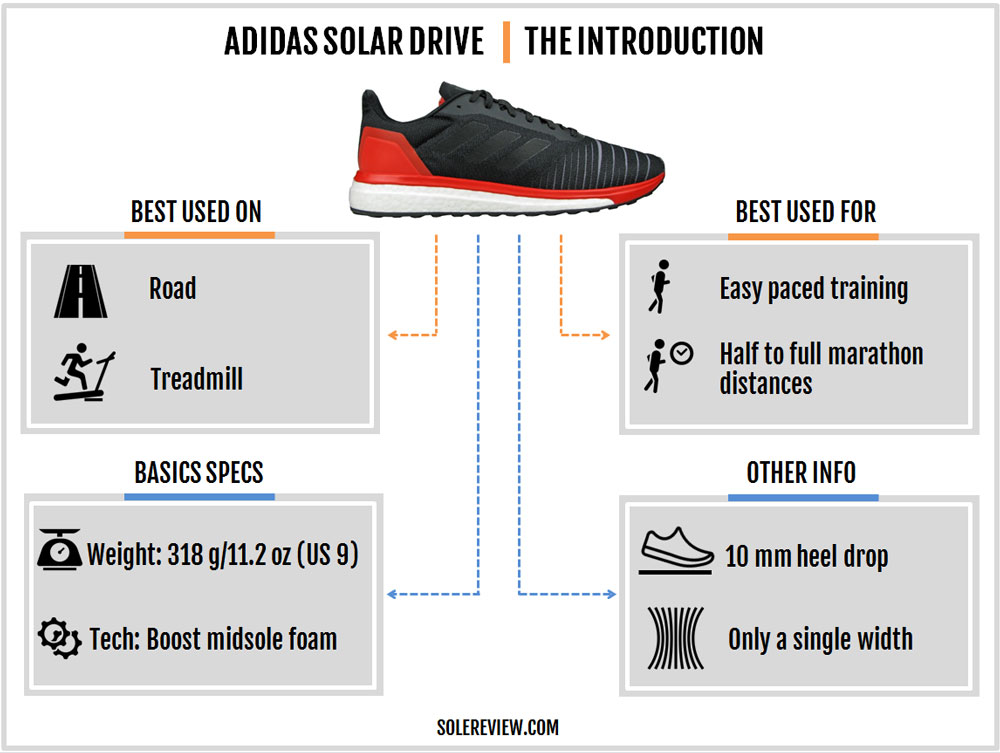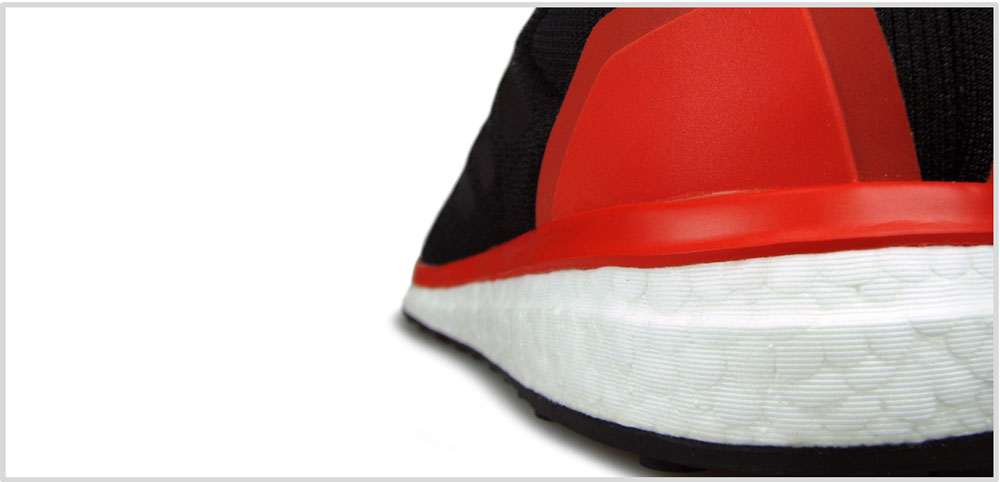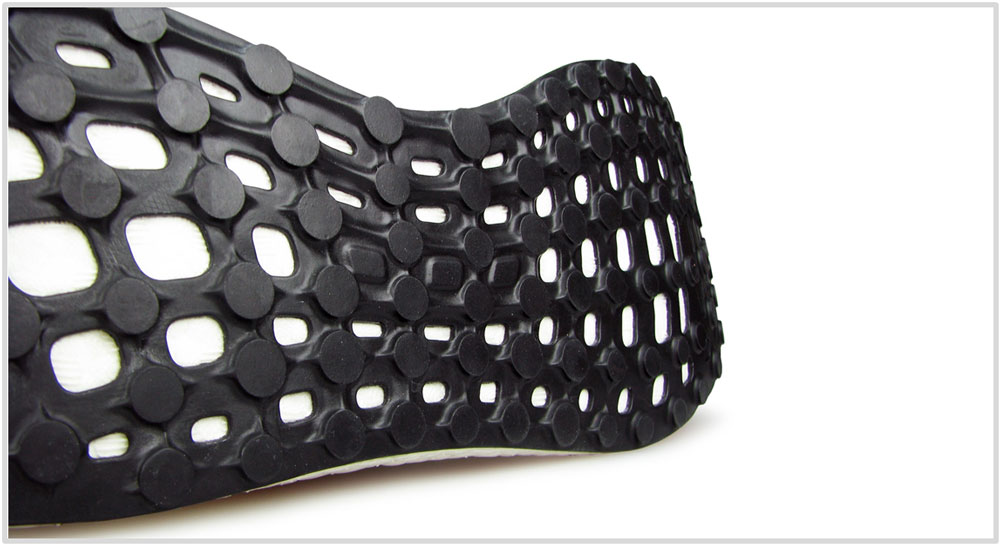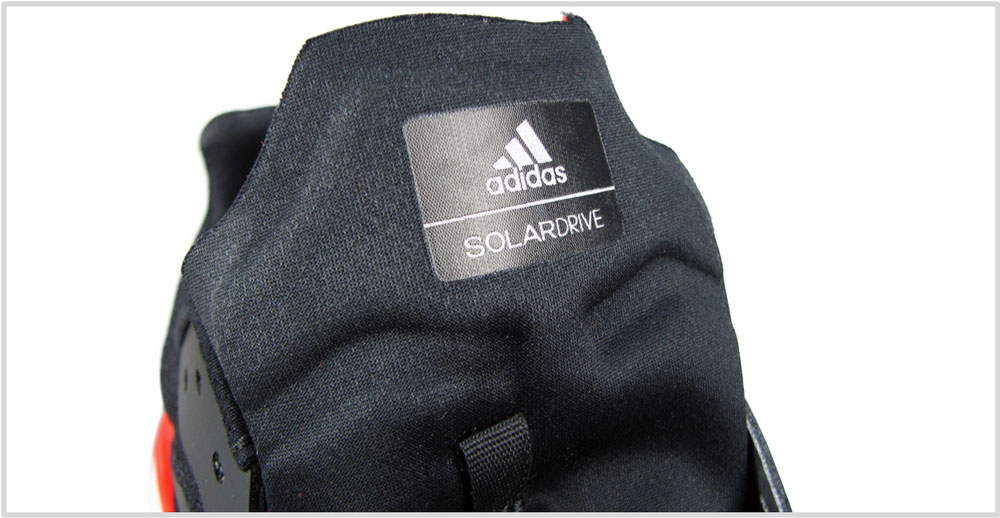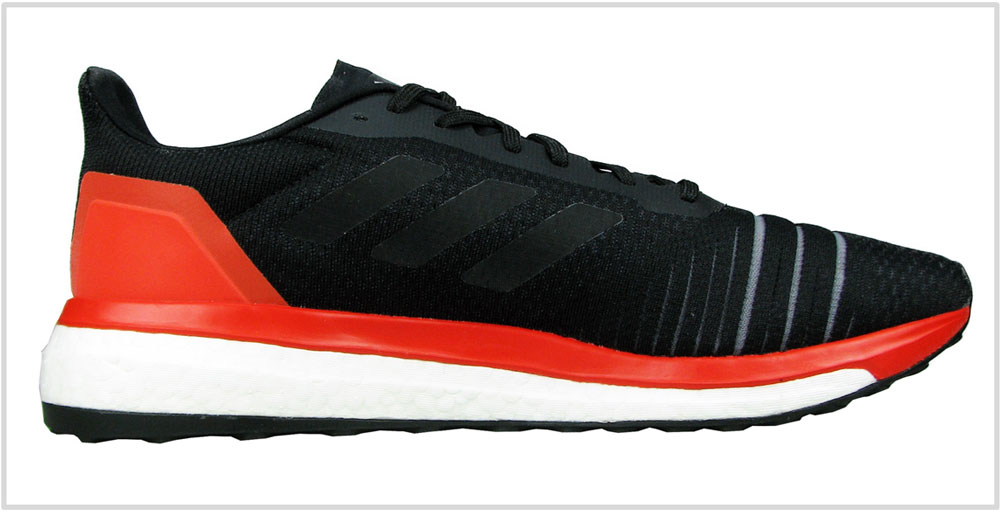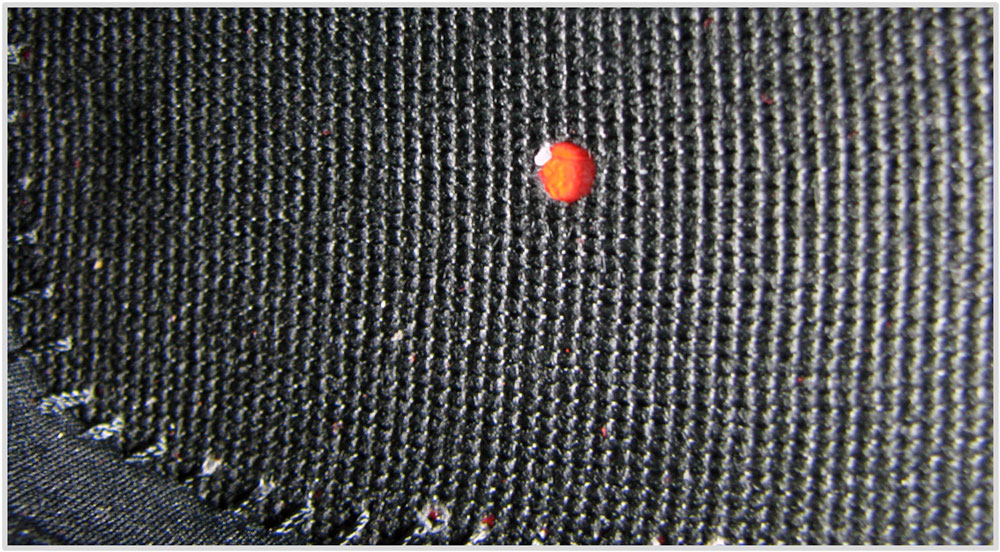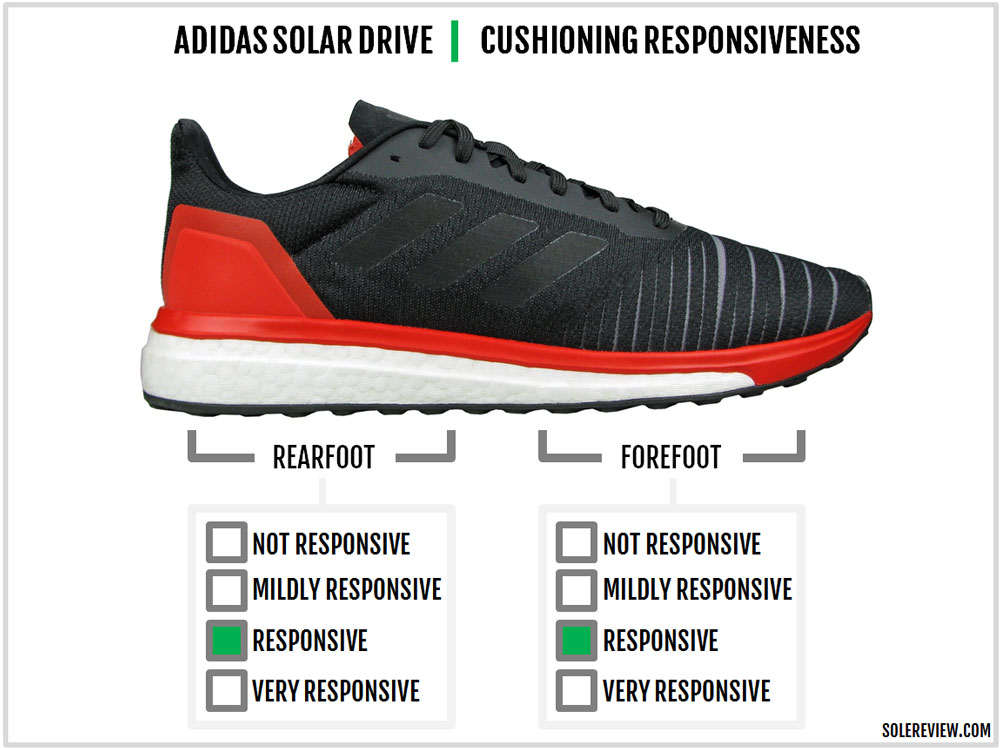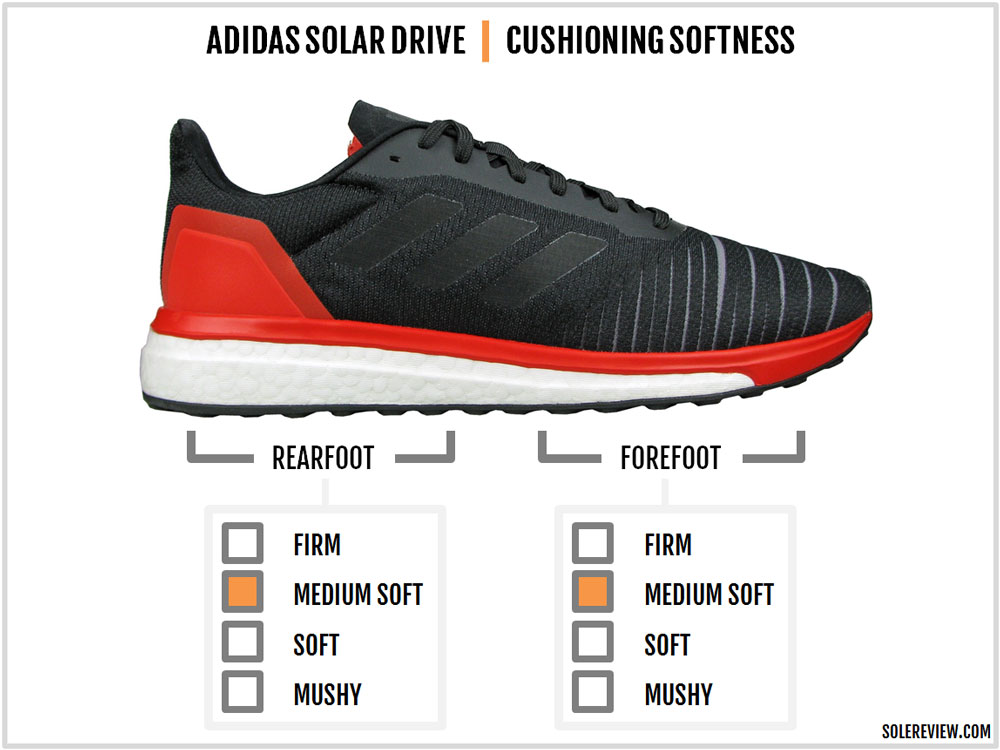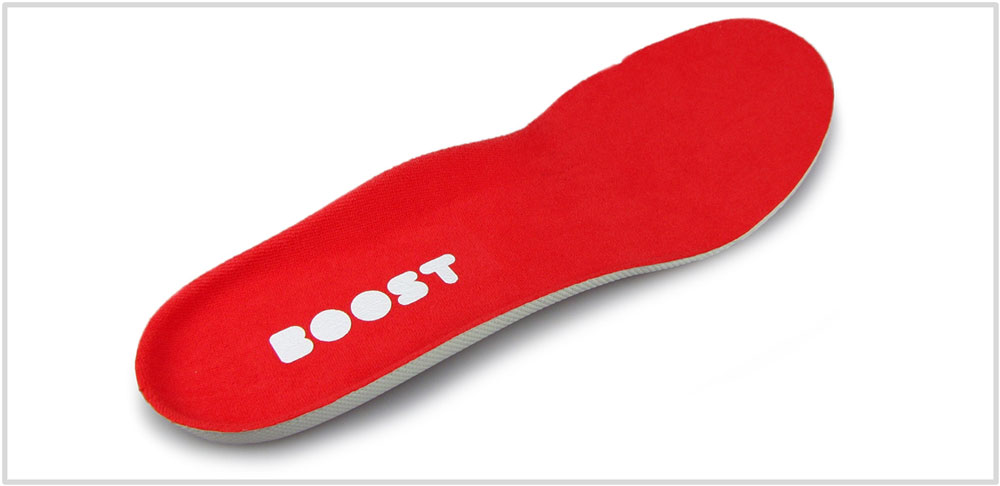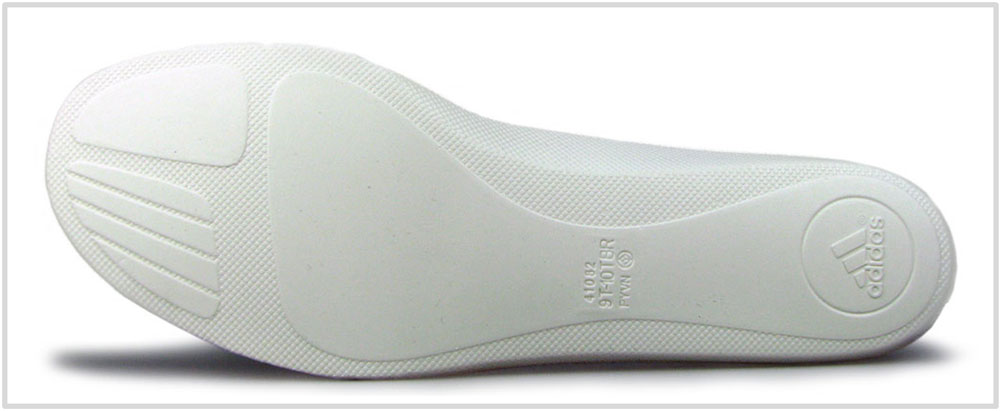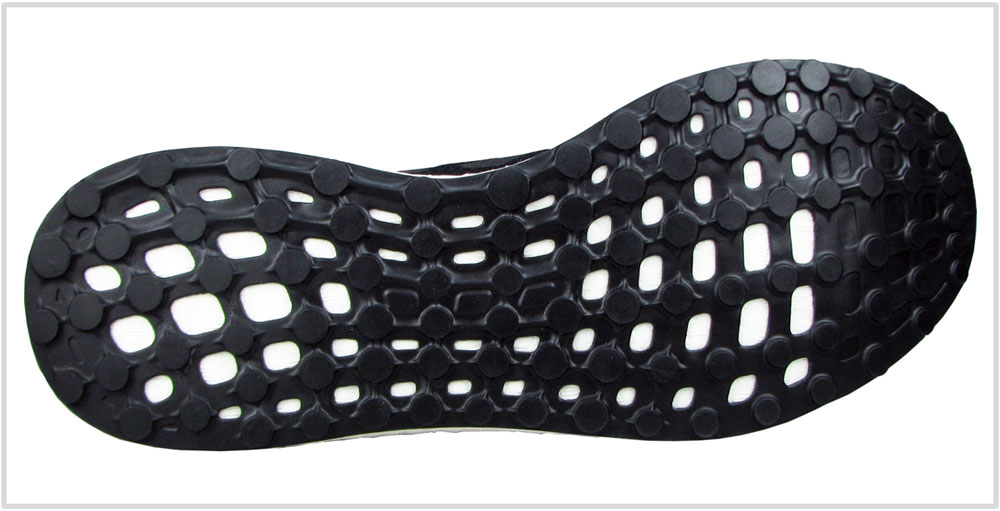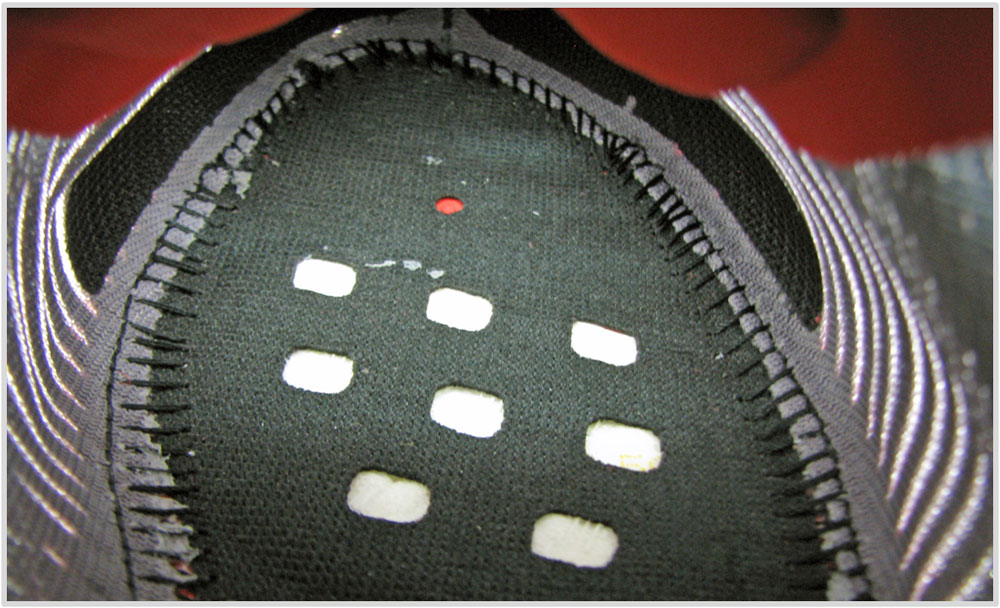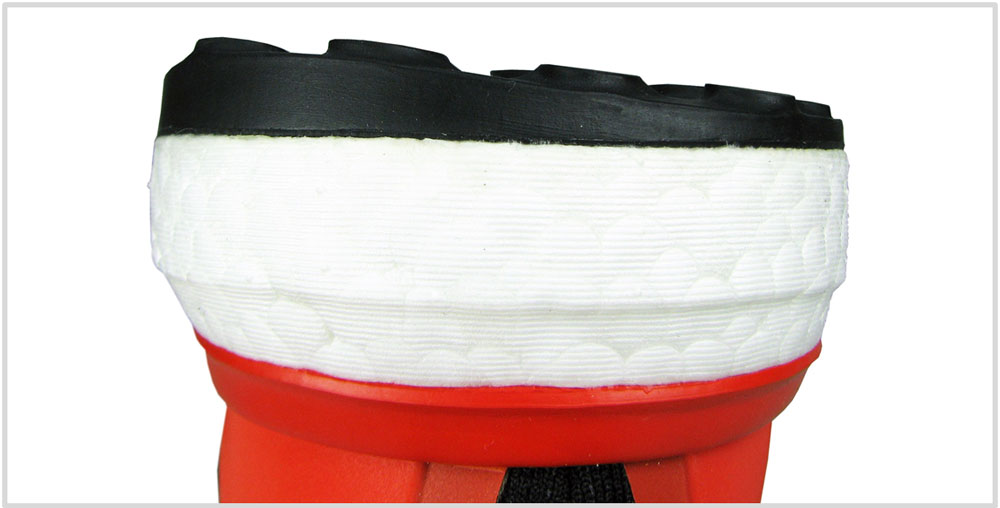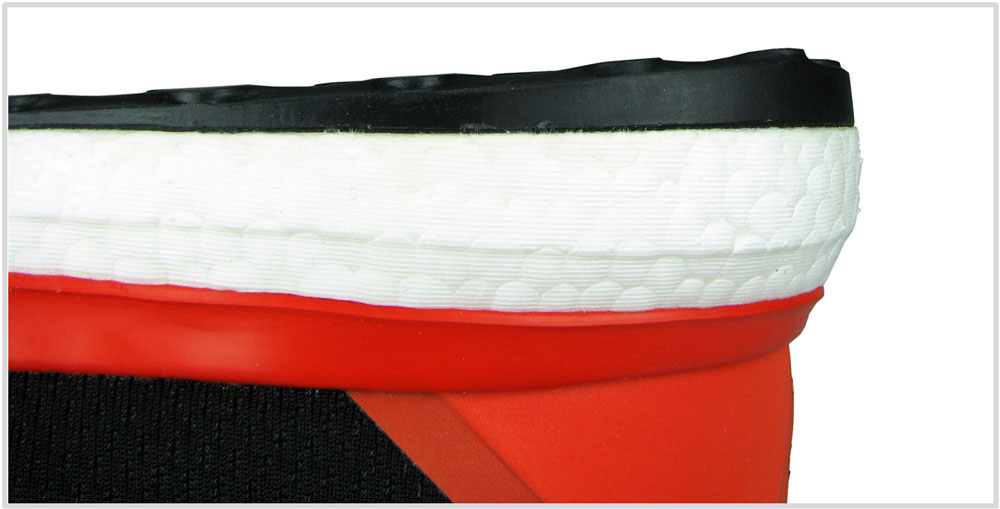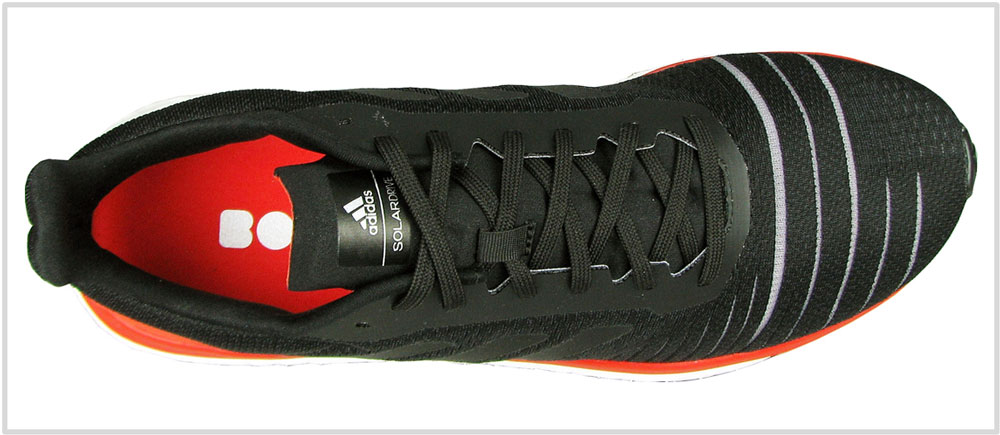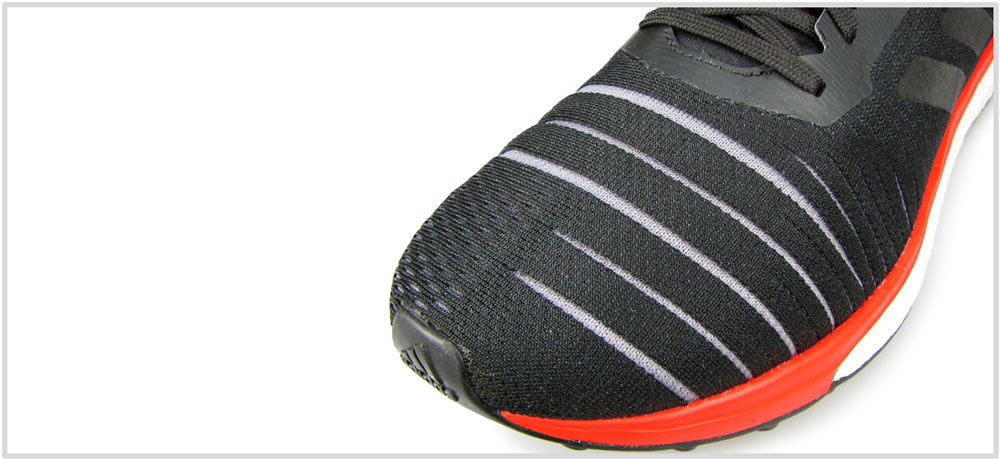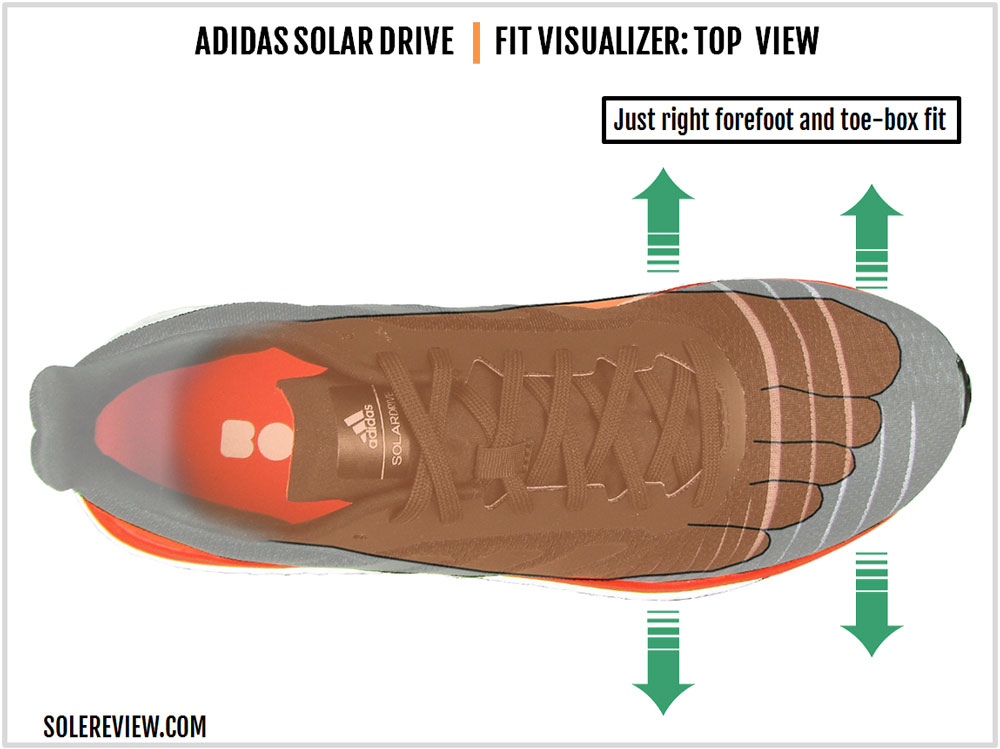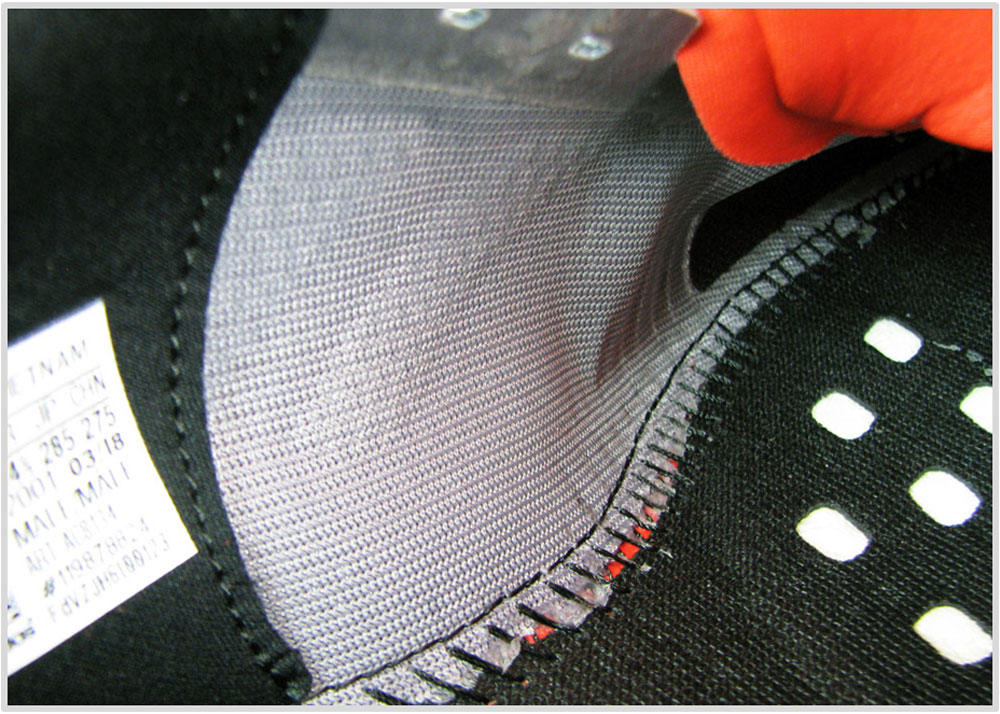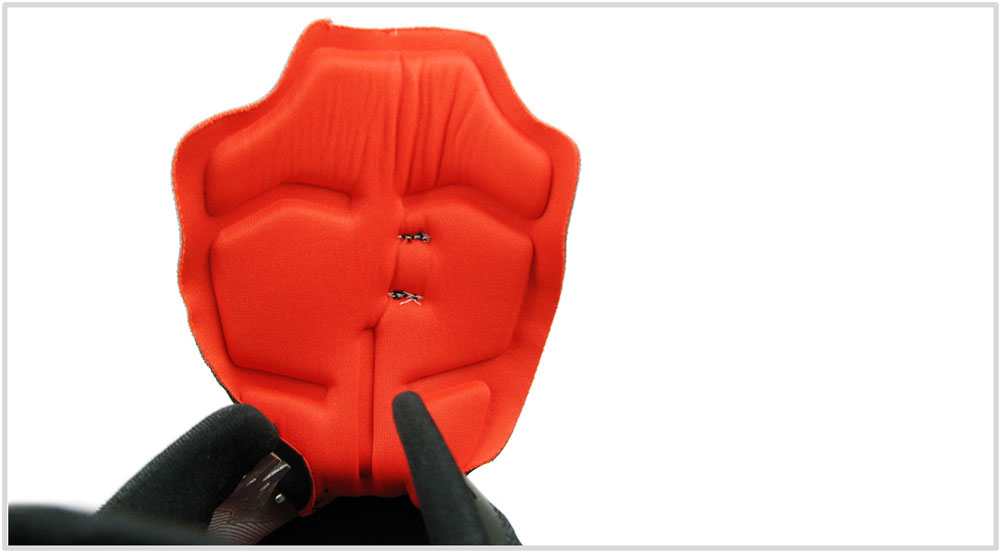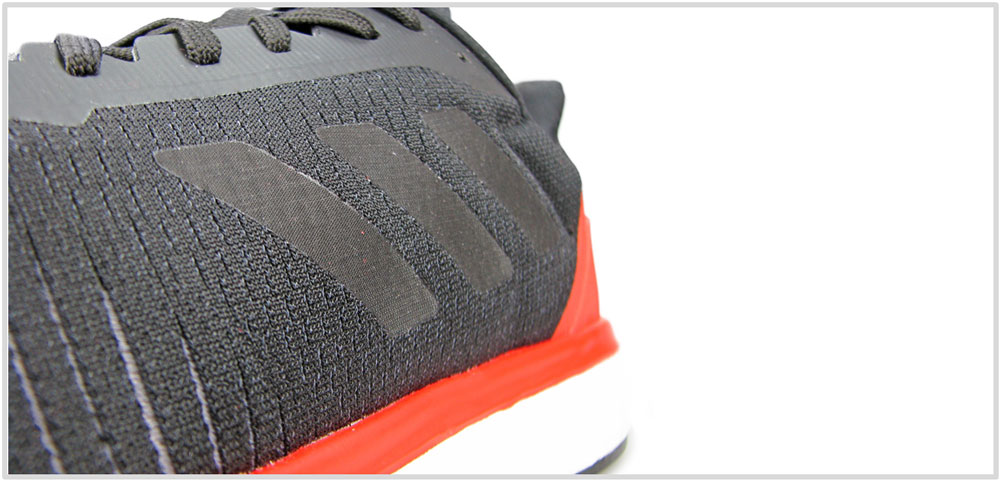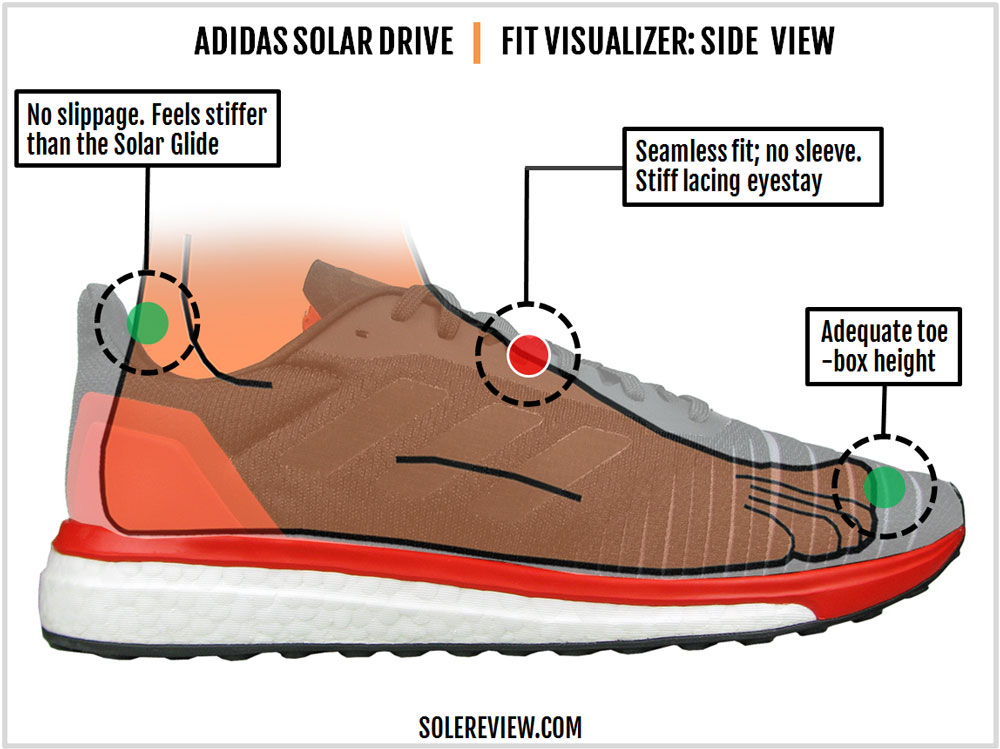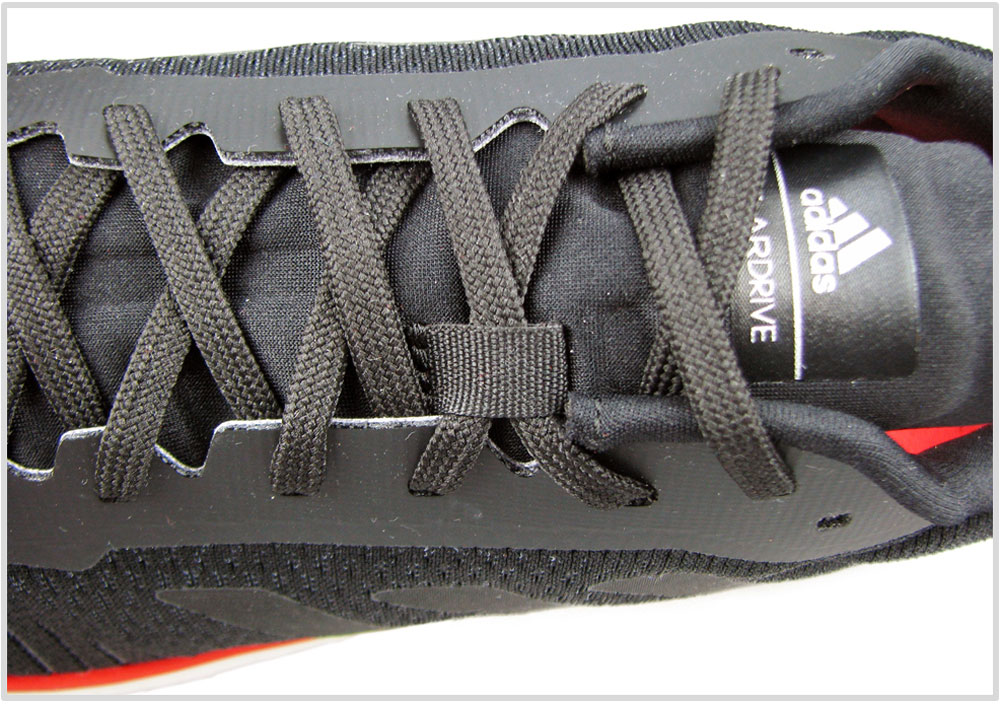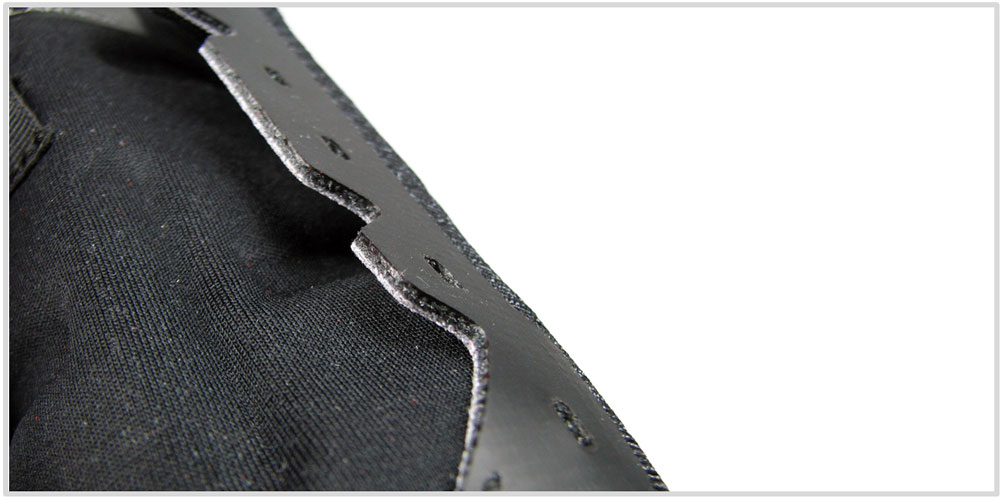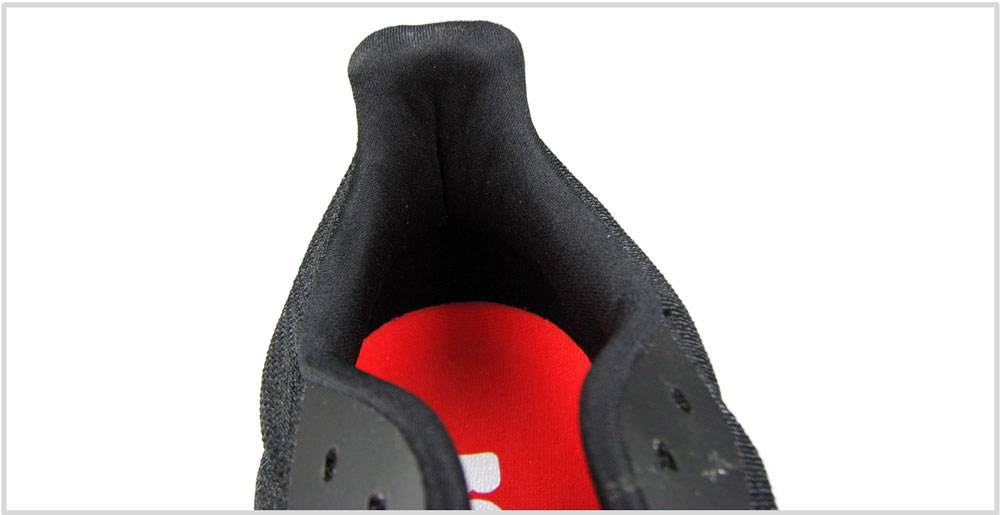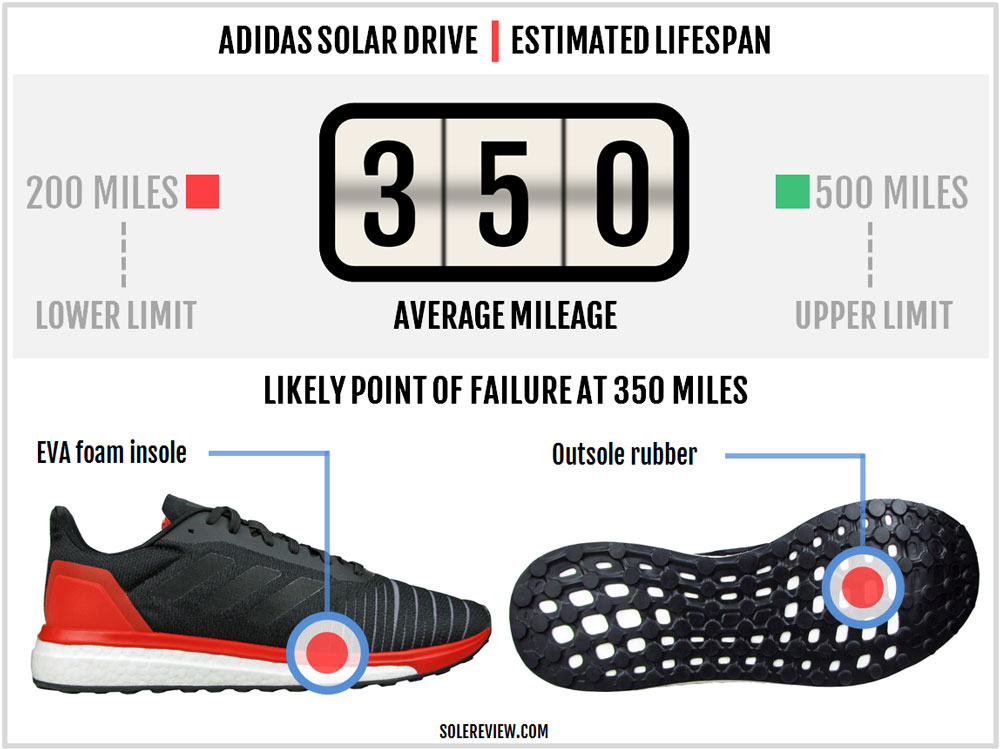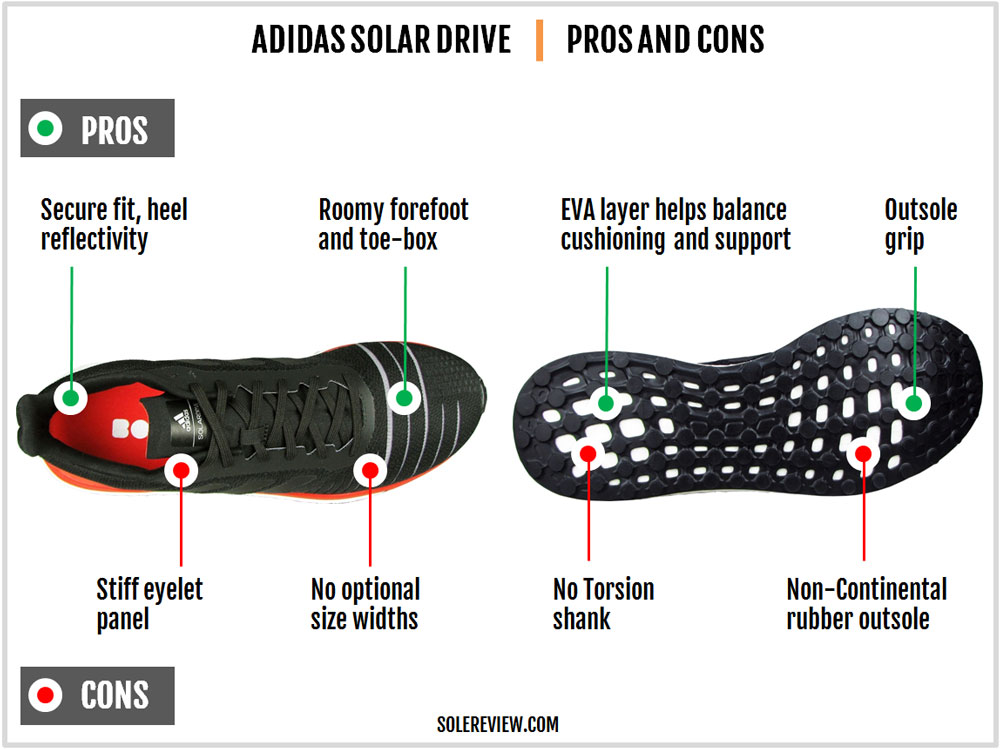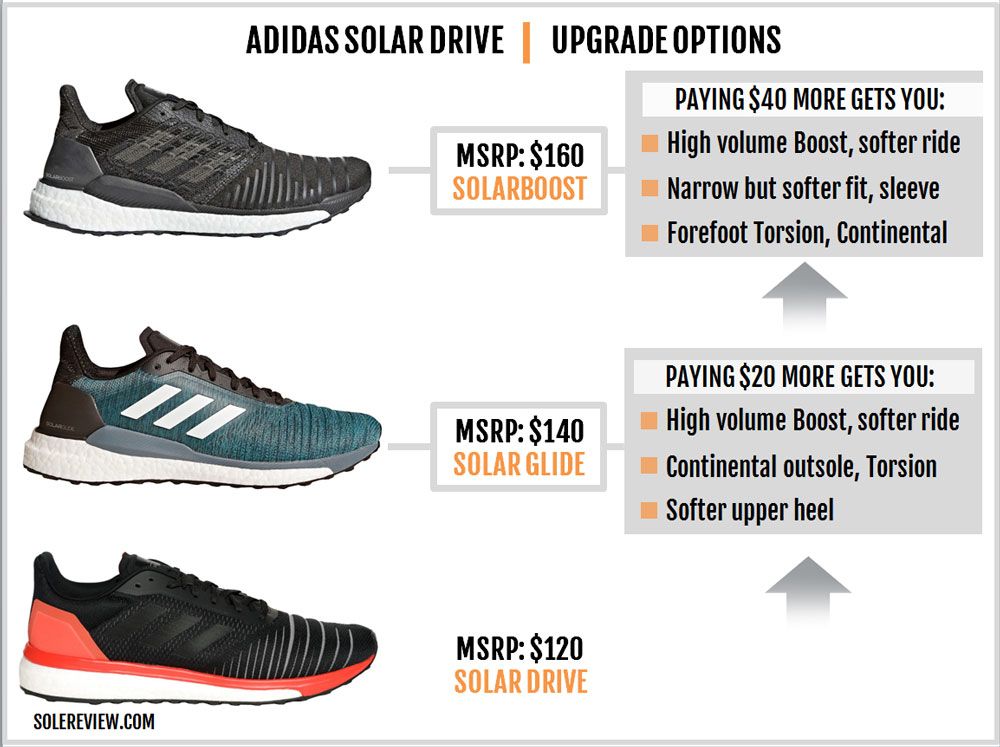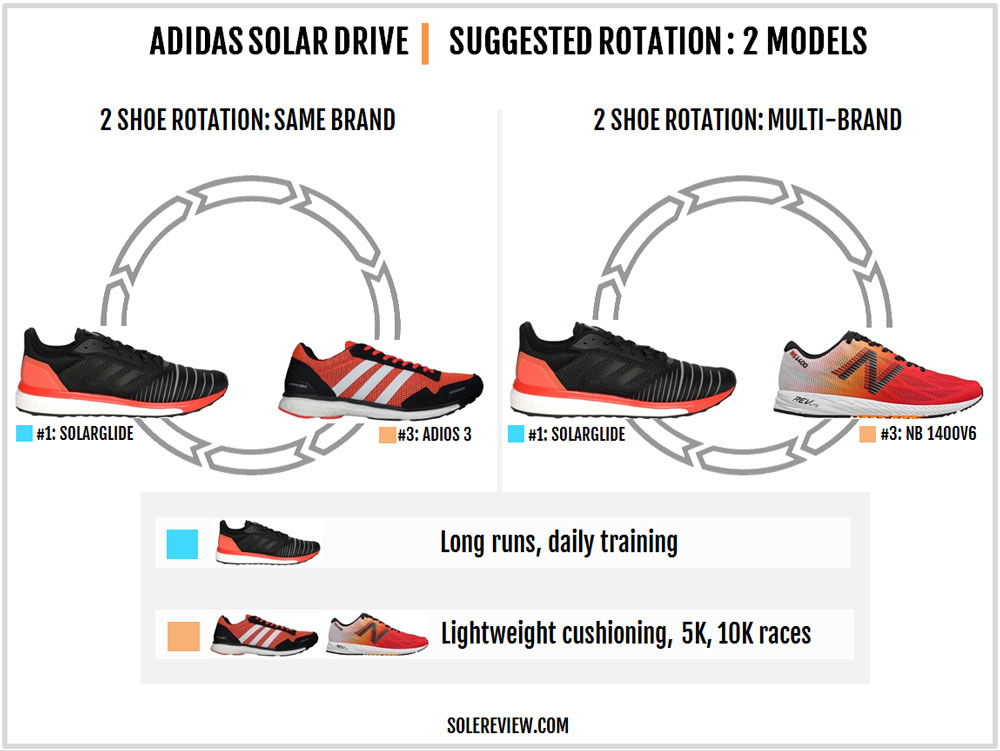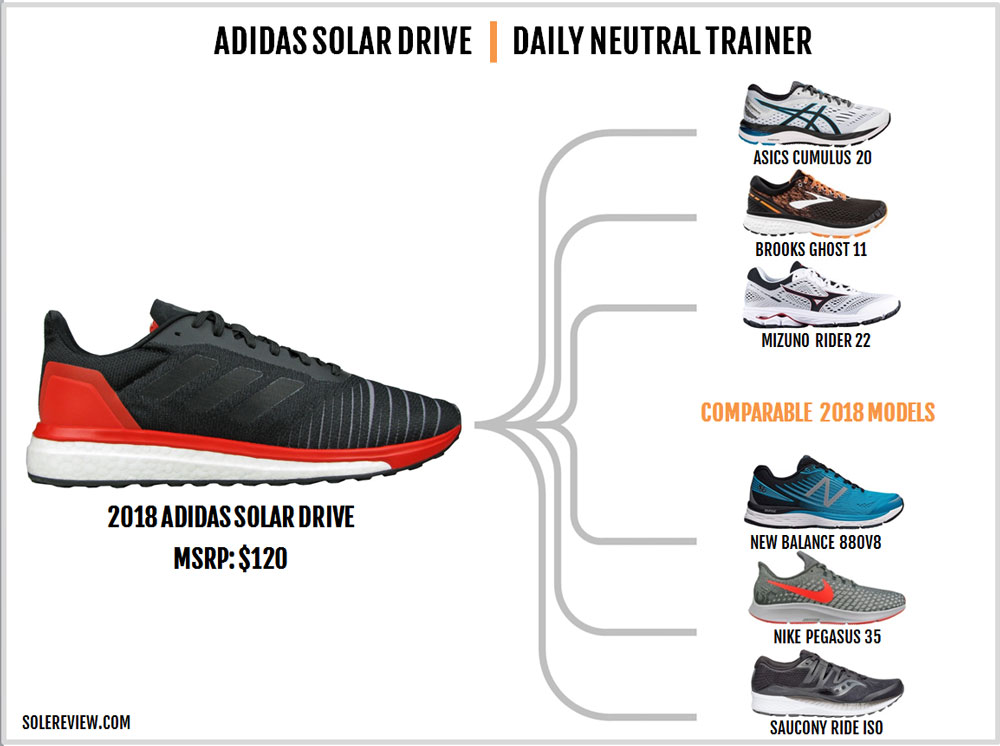INTRODUCTION
The Solar Drive succeeds the Response Boost LT, a model which was, until recently, adidas’s entry-level running shoe with a full-length Boost midsole. The Response series was a part of the original adidas collection which also consisted of the Supernova and Adistar line-up at higher price-tiers.
For 2018 the Supernova and the Response Boost are replaced with the Solar Glide and Solar Drive respectively, thus marking the end of a long-continuing categorization.
The SolarBoost and Solar Glide get a new upper and sole unit. On the Solar Drive, the updates are limited to the upper. The Drive carries forward the same midsole and outsole as the Response. In the motion-control category, the Solar Drive ST has the same Stableframe midsole as the Response ST.
The fact that the Solar Drive features the Response LT sole makes it an interesting study. Unlike the SolarBoost and the Glide, the Drive’s Boost midsole is topped with a layer of firmer EVA. This produces a markedly different ride quality than the other two.
There’s a bit of the Supernova Glide 8 in the Solar Drive; the latter has a ride which is firmer and more responsive than the rest of the Solar line.
But let’s be clear. This outcome isn’t a result of adidas wanting it to be so; rather, the German brand is being lazy and penny-pinching. By using the same sole unit as the Response, the Solar Drive ends up being an old wine in a new bottle. If both the SolarBoost and Glide feature clean-sheet designs, why single the Solar Drive out?
It’s disappointing because adidas squandered the opportunity to make the Solar Drive a better version of the Response LT. Let’s not forget that the Drive now retails at US $120; it is no longer the $100 shoe which made the original Response Boost great value. The Drive also costs $10 more than the outgoing Response LT.
For the $10 upcharge, adidas could have tossed in a Continental outsole. Even a nylon Torsion shank would have been a nice touch. Or they could have modified the heel bevel angle to improve the transition quality.
But adidas has not.
And it’s not like adidas doesn’t offer these features at this price. The less expensive $100 Alphabounce Beyond is an excellent example. It has a Continental rubber outsole and yards of molded TPU. All of that sits under an upper which makes the Alphabounce fit and feel like a more expensive shoe.
In contrast, adidas treats the Solar Drive like an unwanted stepchild. So much so that adidas doesn’t even feature the model on their US website. It is available in international markets and select family footwear type retailers with the United States.
A $120 price isn’t entry level – not even by a long stretch. In fact, this price segment is hyper-competitive and is populated by the likes of the Brooks Ghost, Saucony Ride, and the Nike Pegasus. When you see it that way, the adidas Solar Drive is priced out of its class.
But.
It’s worth reviewing the Solar Drive in detail because it shares certain traits with the legendary Supernova Glide 8. There are a few missing parts like the Continental rubber outsole and Torsion. Yet, with the firmer EVA layer topping the Boost midsole, the Solar Drive serves up some good ol’ nostalgia.
Also, a lot of runners might not like the soft ride of the SolarBoost and the Solar Glide. In that case, the Solar Drive is a suitable alternative which doesn’t cost as much. The cushioned yet smoother ride quality makes the Drive more versatile than the others in the Solar line-up. You also get plenty of reflectivity for low-light running.
THE RIDE EXPERIENCE
If your Boost experience is limited to just the newer (and softer) Supernovas, then you’ll discover the Solar Drive’s distinct ride signature.
The Solar Drive’s midsole is identical to the last year’s Response LT. This means that its midsole stack is 2 mm lower than the 2017 Supernova and the neutral Solar models.
Not only that, the Solar Drive’s lower-volume midsole is topped with a separate sheet of firmer EVA. This differs from the Solar Boost and the Solar Glide, both of which lack a firmer EVA layer. They have rims which are restricted only to the midsole sidewalls.
In a way, the Solar Drive is based on the older Boost midsole design. The previous generation of the Supernova Glide and the Response had a firmer EVA layer laid over the softer Boost foam.
Unsurprisingly, the Solar Drive possesses a ride character which feels familiar. Although, if you already own the Response LT, then you’ll notice no difference at all – because the Solar Drive is just an upper refresh over an identical midsole.
On the other hand, if you were a fan of the Supernova Glides 6-8, then you’ll find a lot to like in the Solar Drive’s ride quality.
To begin with, the rearfoot cushioning doesn’t have the uber-soft nature of the more expensive Solar models. The EVA layer on top imparts a sense of firmness, and the lower stack height creates an optimal balance between cushioning and support.
The Solar Drive feels more responsive under the heel and midfoot than the Solar Boost/Glide. The second layer above the Boost midsole prevents the foot from sinking in one spot and instead spreads the compression evenly.
To be honest, we like the Solar Drive’s cushioning and responsiveness levels the best – out of the Solar lot, that is. The ride isn’t too soft and the transitions feel smoother due to the firmer EVA top-layer.
On longer runs of 10+ miles, the level of ride comfort proves more than adequate. The Boost foam has plenty of cushioning regardless of its orientation. The molded EVA insole is rather thin but adds some softness over the firmer EVA top-sheet.
The balance of lower-level softness and upper firmness also makes the Solar Drive capable of slightly faster runs of 7 min/mile or under 5 min/km or faster. Naturally, the Solar Drive won’t feel as fast as a Boston or an adios but it certainly feels more efficient than the Glide.
The non-Continental outsole isn’t bad at all. So far, we have around 50 miles on the Drive and there haven’t been any noticeable signs of wear. The rubber also grips very well on road. When new, it squeaks on smooth floors though.
The soft rubber (not the blown kind) compound is molded in a latticed geometry and flexes along with the midsole. The forefoot doesn’t have a firmer EVA midsole layer covering it so the Solar Drive has decent levels of flexibility.
Since the Solar Drive uses the same sole as the Response, it carries forward the same quirks. The heel edge has an unusual design; the inner outsole is significantly thicker. We do not recall having seen this kind of outsole in any other shoe save the Response Boost and Solar Drive.
We’re not sure why exactly the outsole is designed so. Perhaps adidas meant it to produce a motion control effect, making it slightly harder for the shoe to roll inwards. Whatever the reason, the thick edge isn’t noticeable at all during runs.
What gets noticed, though, is the lack of a bevel near the heel edge. The spring or gap between the outsole and the surface is almost non-existent.
This causes rearfoot strikers to land near the heel edge instead. This isn’t a problem in either the SolarBoost or the Solar Glide, both of which employ a beveled outsole.
The Torsion shank is conspicuous by its absence. The latticed outsole is pliable through, and one misses the partial rigidity of the plastic shank.
For example, the Solar Glide’s Torsion piece helps quicken transitions from the inner rearfoot to the midfoot. The Solar Boost betters that by extending the Torsion into the forefoot.
And this is precisely what we meant when we said that adidas has squandered the opportunity to make the Solar Drive a great shoe. The Drive is a capable daily trainer for most use-cases and will make most runners happy.
At the same time, you’re very aware of its shortcomings. adidas had ample time to elevate the ride and fit quality of the Solar Drive to the standards a $120 shoe should meet, and it did not.
The Solar Drive is a good shoe to run in, but it’s far from great.
UPPER FIT QUALITY
Despite some of its shortcomings – such as the stiff eyelet panel and the somewhat downmarket material package – the Solar Drive scores well on the overall upper fit. The forefoot is roomy and has plenty of ventilation.
The construction of the Solar Drive’s upper is modeled on the more expensive Solar Glide. The forefoot is overlay-free and uses a ribbed mesh which is similar to the Glide. This set-up creates plenty of room, and the internal bumper ensures that the toe-box isn’t vertically challenged.
The insides feel very smooth. Except for the heel joint, the outer upper is made of a single piece of engineered mesh. The tongue is a separate piece with foam packed into its molded pockets, and there’s no sleeve. An off-center loop on the tongue prevents it from sliding.
There’re no seams inside. The midfoot side panels are soft; unlike the Glide, there’s no synthetic fusing adding stiffness. Only the adidas three stripes logo are printed on the sides. The minimal construction also helps with the ventilation.
The multiple layers of reinforcement make the lacing eyestay stiff. On the bright side, this design adds strength and makes the eyelets nearly impossible to tear. The eyelets do a decent job at keeping the semi-elastic laces locked in their place.
Unlike the more expensive Solar models, the Drive uses an internal heel counter instead of the plastic clip. When compared to the Solar Glide and SolarBoost, the Drive’s heel fit is stiffer.
Even though the heel has an Achilles ‘lip’, the area is firmer. The stiffer construction has no negative impact on the upper functionality; the heel fits securely without slipping.
Reflectivity is abundant on the Solar Drive. The outer panels over the rearfoot are reflective, so the Solar Drive is a good pick if you value low-light visibility.
DURABILITY ASSESSMENT
The durability of the Solar Drive is at par with most shoes in the industry which does not have Continental outsole. The median lifespan is around 300-350 miles – and that’s how long the Solar Drive should last.
At the time of writing this review, we have around 50 miles on the Drive and have yet to see symptoms of abnormal wear and tear. The durability has certainly improved since the first Response Boost. And parts like the Boost midsole are highly resistant to compacting so that’s not something you need to worry about.
PROS AND CONS
What we like most about the Solar Drive is its optimal balance of cushioning softness and top-layer firmness. The independent EVA foam layer over the Boost midsole keeps the ride from becoming overly soft. The said EVA topping also improves transitions – the manner in which the weight-loading happens during the gait cycle.
While the upper materials feel low-budget for a shoe which costs $120, the upper fit doesn’t give many reasons to complain about. Yes, the heel and eyelets are a bit stiff, but there’s plenty of room inside a smooth interior.
A Torsion Shank, Continental rubber outsole, heel bevel, and a softer upper would be some of the things we would like to see on the next edition of the Solar Drive.
And widths, of course. Additional widths.
PRICE UPGRADES: WHAT’S THE CATCH?
Price upgrades happen in increments of $20 within the neutral Solar line-up. Priced above the Drive is the Solar Glide, a running shoe with a softer ride than the Drive.
The Glide’s spacious upper uses plusher materials, and the difference is noticed – particularly inside the forefoot and heel. The upcharge also gets you a Continental outsole and a plastic Torsion shank.
The SolarBoost occupies the top price tier. The ride is like the Glide except that the forefoot benefits from the Torsion extensions. So while the Solar Boost rides softer in the heel, it delivers snappier forefoot transitions.
Here’re a few important buying tips. Both the Solar Glide and Solar Boost feature the raised midsole sidewalls whereas the Drive does not. That’s because the SolarBoost and Glide are based on a clean-sheet midsole design. In contrast, the Drive borrows the Response LT’s design without any updates.
If you like the sensation of side upper support, then the more expensive Solar models make a sensible buy.
The other point worth calling out is that none of the Solar models offer extra widths. If you need more interior room, then stick to either the Glide or Drive.
The SolarBoost has a smooth interior but fits very narrow compared to the other two.
RECOMMENDED ROTATION
For a change, we’ll suggest a two-shoe rotation here. The Solar Drive isn’t as soft as the SolarBoost and the Glide so adding a bridge shoe will be overdoing it.
Instead, we recommend that you get the adizero adios 3 or the New Balance 1400V6 for faster training runs and the occasional race-day.
Both these lightweight shoes aren’t true racing flats and their midsoles have adequate cushioning for up to 15K runs.
For longer runs and marathons, use the Solar Drive. The transitions aren’t sappy and there’s plenty of cushioning to tap into.
SIMILAR NEUTRAL CUSHIONED SHOES
For adidas, the Solar Drive is its ‘entry-level’ Boost shoe. In the real world, it isn’t – not at a US retail price of $120, that is. The said amount buys you the who’s who of neutral cushioning. We’ll be happy to highlight some of those models.
The Brooks Ghost 11 is a cushioned and supportive neutral trainer with a comfortable upper fit. It uses a ‘DNA Loft’ heel crash pad, a new cushioning tech which appears to be based on a synthetic rubber compound.
The Ghost feels more upmarket than the Solar Drive at the same price, and so does the Saucony Ride ISO and the Nike Pegasus 35. The New Balance 880V8 and the Asics Cumulus 20 have a conventional and layered EVA midsole experience.
Mizuno has always gone its own way with the Wave plate design, and the 22 is more of the same. The Wave Rider 22 retains the very familiar ride experience with plenty of support.
In essence, there’re so many neutral trainers to choose from. The Solar Drive makes a case for itself as a running shoe with a soft and smooth ride which is the hallmark of many Boost-based products.
But if you’re looking for a more comfortable upper with optional widths, then it makes more sense to try other neutral trainers.
| Do you own this shoe? Improve this review by sharing your insights – submit a review here. |

